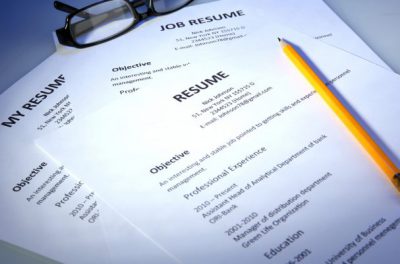When Should You Write A Resume?
The technical answer is you should write a resume when you have a position to apply for; however, you should keep a document that resembles a resume updated at all times. Anytime that something occurs in your work history that you might want to put on a resume, update that document. What do I mean?
I’m talking about anything:
- A new job.
- A new position.
- A change in title.
- More responsibilities.
- Significant accomplishments.
You might say to yourself, “I don’t need to write that down. I’ll remember it.†But two years from now, when you go to dust off your old resume and update it, suddenly you’re struggling with dates. Did I move to that new job in July? Or was it August? And how about that promotion? Was that in March? Damn, I can’t recall.
The Details Are The Important Things
Aside from the primary parts of the resume, you’ll also have to remember the size of the budget you were responsible for. The number of employees. What percentage you improved sales in your territory, or reduced costs in the plant. Were yields at 84% and you improved them to 92%? Or were they at 82% and you improved to 94%?Â
You need to get it right. The first is a 9.5% improvement and the second is 14.6%. A significant difference.
How Do You Keep The Data?
There’s no need for anything fancy. This is strictly raw data you’re keeping track of. Any method that works for you, and is accurate, will suffice. It can be an database or a simple text document. Something like this is about the simplest form I can think of, and it works fine.
Company name: If it’s the same company you’ve been working at or a new one, just list the name here.
Date/s: This should document what date/s you’re referring to.
Title: Title of new position or new job.
Responsibilities: List any new responsibilities, including details.
Accomplishments: This is the most important part, so make certain to get everything right. List anything worthwhile and quantify it. Even if you don’t think it’s worthy for a resume, list it. This isn’t your resume; this is your toolbox.
A Real Example
Here’s what it might look like.
Company name: XYZ Company (A lot of people seem to work at this damn company.)
Date/s: Left ABC Co. 08/2013. Started at XYZ 10/2013. (For your own sake, I’d even list days here, so 08/12/2013, and 10/07/2013.)
New Title: Sales Director Eastern Territory
Responsibilities: Responsible for second largest territory in country, with current annual sales of $75 million and a budget of $6 million. Have six direct reports (regional managers) and a total of 22 sales reps.
Accomplishments: (since you’re just starting here, you won’t have accomplishments yet, but fill this in as you get them.)
This Document Is Your Toolbox
It’s like having a box full of different size socket wrenches or a drawer filled with measuring spoons. If you’re baking a pie and you need two tablespoons of vanilla, you don’t use ½-cup containers to measure. And if you’ve got a ¾ inch nut to loosen, you don’t use a â… inch socket wrench. This is exactly how your resume should be.
When you go to write your real resume, here’s what you do. Take a look at the job description, figure out the specifications and requirements, and then tailor your resume to fit it. With the preparation you did it will be easy. No more difficult than opening up the kitchen drawer or the toolbox in the garage and selecting the right fit.
If they need someone to increase sales in a poorly-performing territory, go get those accomplishments that prove you’ve done it. If they have problems with employees, pick out those times you resolved conflicts and got everyone working together as a team.
Bottom Line
If you keep a record like this, tailoring your resume will be easy. It’ll be like using building blocks or drag-and-drop on a computer. You simply take the dates, titles, responsibilities and accomplishments you want to use, and insert them into your new resume.






















Connect
Connect with us on the following social media platforms.